When the 747 SuperTanker that was mobilized to help fight the wildfires in Chile pulls into the ramp at the Santiago Airport a series of tasks begin that, if everything goes perfectly, can be accomplished about half an hour. The aircraft arrived on January 25 and since then some of the procedures have been refined in order to speed up the process.
Stairs
Stairs mounted on a truck, sometimes called “air stairs”, are positioned at the forward door on the left side. These are necessary because that door is quite a distance above the ground; a wild guess: 25 feet. On Thursday one of the 747’s maintenance personnel drove the stair-truck. When he was finished he moved on to other tasks. Usually one of the three crewmembers exits the plane and does a walk around inspection of the aircraft. He might be looking for tree branches stuck to the wings. (Kidding !!!!)
Internal connections
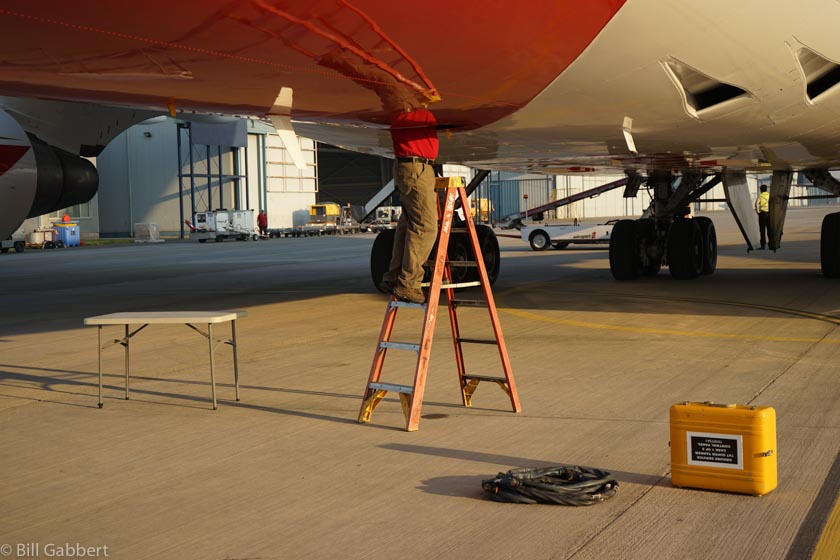
There is a small door on the belly of the aircraft that when opened allows access to the hoses used to refill the 19,200-gallon tank. The operator pushes a button and four of them magically descend. Two are approximately 2.5″ or larger and are the ones being used this week. There are two others about 1.5″ or 1.75″ that I have not seen being used.
Monitoring system
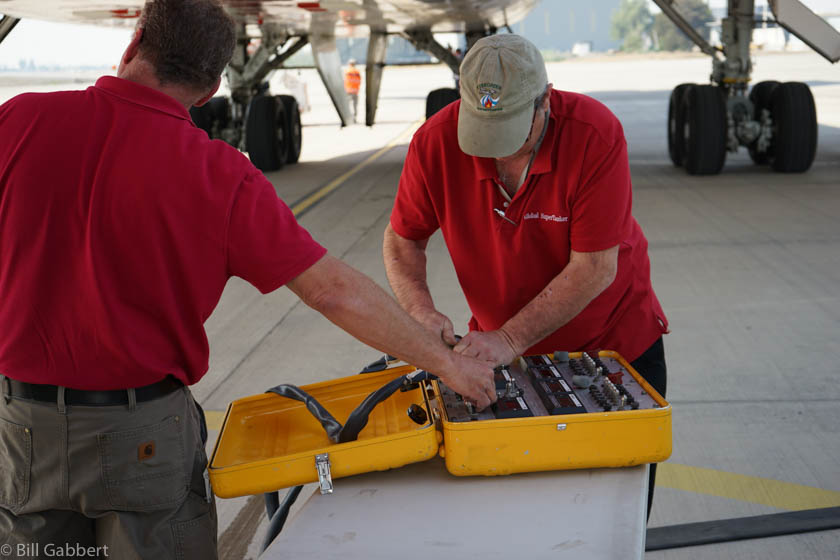
Also behind that door are electronic plugs to which a cable is connected. A small folding table and a ladder are carried out by maintenance personnel and are set up below the door. The other end of the cable is attached to a suitcase-sized box of electronics placed on the table with displays for monitoring the compressed air and water (or retardant) being loaded onboard.
Water (or retardant)
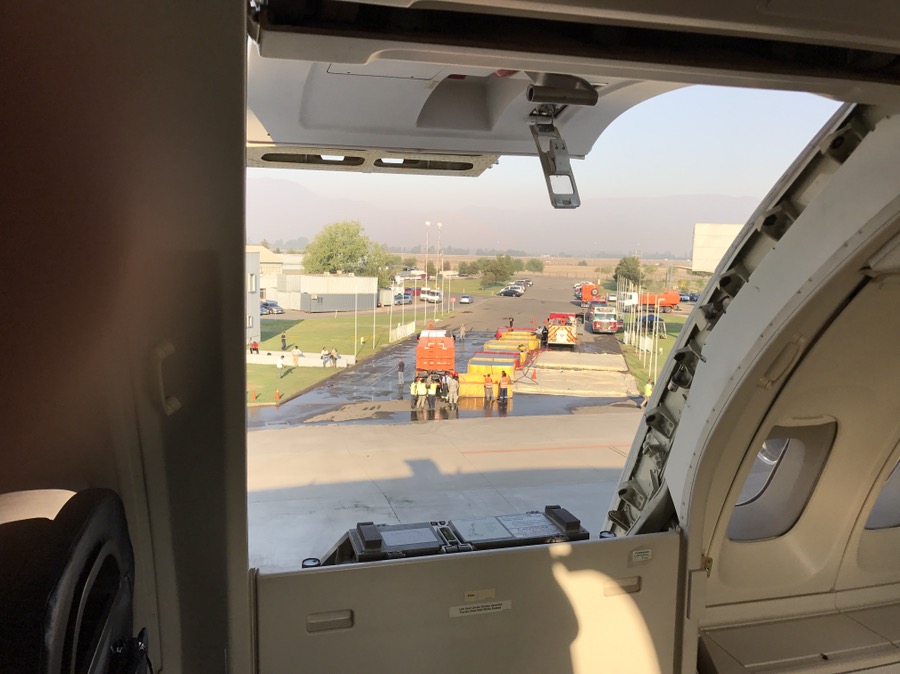
In locations around the world that commonly use large and very large air tankers, a hose is simply connected to the aircraft that supplies retardant or water to fill the tanks. It can come from a batch mixing system that prepares retardant or from a fire hydrant. Since Chile does not have infrastructure for refilling large and very large air tankers and fire hydrants are rare, a water delivery system had to be improvised at Santiago.
The water system that firefighters set up at the airport was fairly massive in scope. In addition to two large water bladders, they had eight portable water tanks linked by large diameter hard suction hoses that automatically siphoned water from one tank to the next as the levels in the tanks lowered. There are few if any fire hydrants at the airport near the 747’s ramp so up to 14 large capacity fire trucks, large Type 1 engines and water tenders, shuttled water to keep the portable water tanks full. An airport crash-rescue truck pumped from the tanks through two hoses to the 747 SuperTanker.
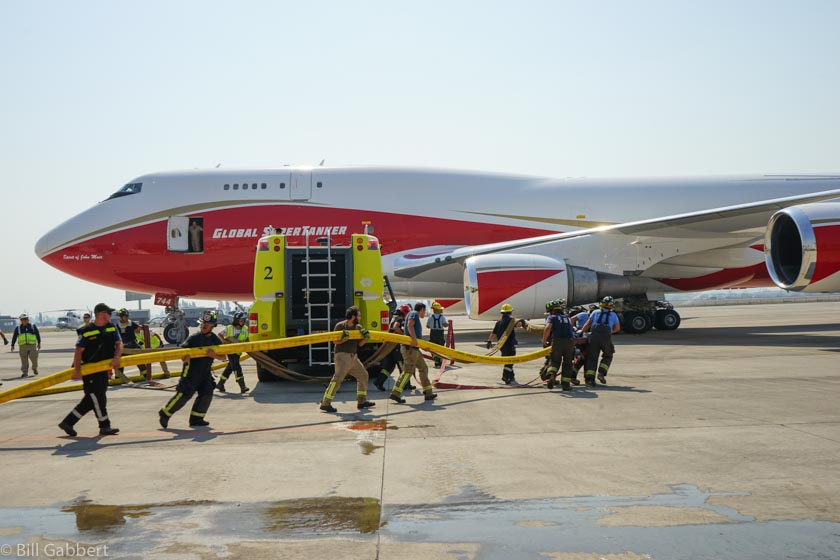
Compressed air
Compressed air is needed on this air tanker to disperse the liquid out of the tank, unlike others that use the force of gravity. When the pilot wants to drop the liquid, valves are opened that allow compressed air to push the liquid through the four large nozzles on the belly. The crew can select how much of the 19,200-gallon load to be dispersed on each drop. They can make multiple drops on one load.
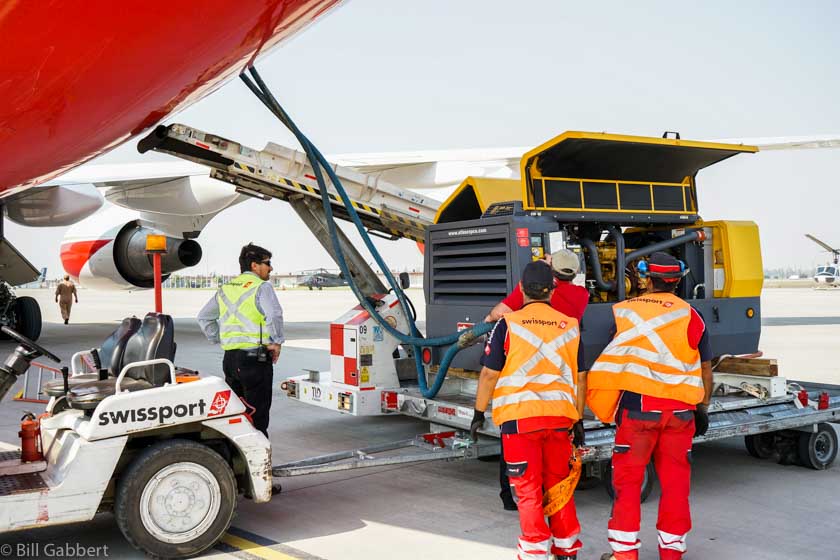
The crew brought a rented air compressor with them. They preferred a larger one that could refill the air tanks more quickly, but it would not fit through the door in the cargo hold. After arriving they sought to rent a large one locally but the vendor, Atlas Copco, refused. Instead he donated the use of the large machine since it was going to be used to battle wildfires. The larger one arrived just as the other began to break down. It’s a bad sign when you see jumper cables being carried out to an air tanker.
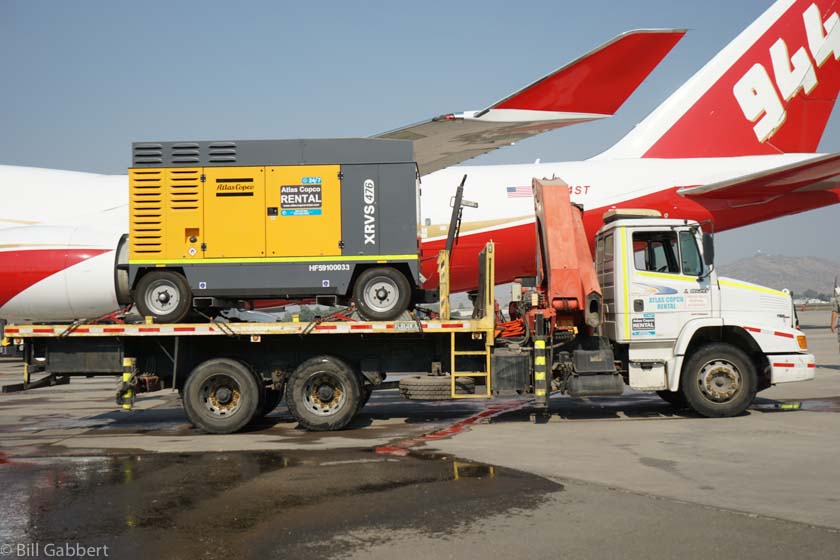
Jim Wheeler, President and CEO of Global SuperTanker, said they intend to purchase a large-capacity compressor that they will modify to fit into the airplane.
Refuel
Sometimes they need to refuel. It depends on the distance to the fire or if they had to loiter, carving circles in the sky (or flying a “racetrack pattern”) waiting for an assignment. This can be one of the most time consuming tasks, and may be adversely affected by the availability of the fuel truck.
Push back
At this airport the aircraft must be connected to a small vehicle, a “tug”, that pushes the aircraft back and turns it 90 degrees so that it can exit the dead end ramp. In most locations an air tanker can taxi in and out without having to use a tug.
In the video below, Chief Paulo Gomez talks about the system at the airport to refill the aircraft.


What are the cost of such an operations?
Who’s paying it?
For a such a wild fire like chili “how many times the 747 should refill with liquid ?
How long will take ? this supper tanker back to the fire sight?
Mike
I was wondering if there is an Air Attack down there or is the ship basically being tasked from the ground. Must be a challenge with the language as well. Amazing how quickly they adapted and overcame.
An air attack and lead plane are used.
Delighted to see these detailed accounts of mission progress there in Chile, Bill. It seems like the trip is well worthwhile both in terms of actual fire fighting but also in terms of lessons learned for both the aircraft crew and local firefighters in how to operate this behemoth in real world conditions.
Can you please post the actual pressure used by the compressed air disspersal system? Also, what is the N-number of the aircraft?
Keep on blogging the events, this is interesting even to us non-fire fighters.
Dave, the tail number of the Supertanker is N744ST.
Thanks, Bill, I guess I could have figured that one out myself, eh? Very descriptive reg number.
Why 30 minutes? That’s a long time for a fire to burn homes and property. Maybe there is a better design?
They lowered that time to 13 minutes today.
In the video Paulo Gomez explains they reduced the 90 min. first refill to 15 min.
Great narrative on the procedures once a mission has been completed. Thanks for the updates!